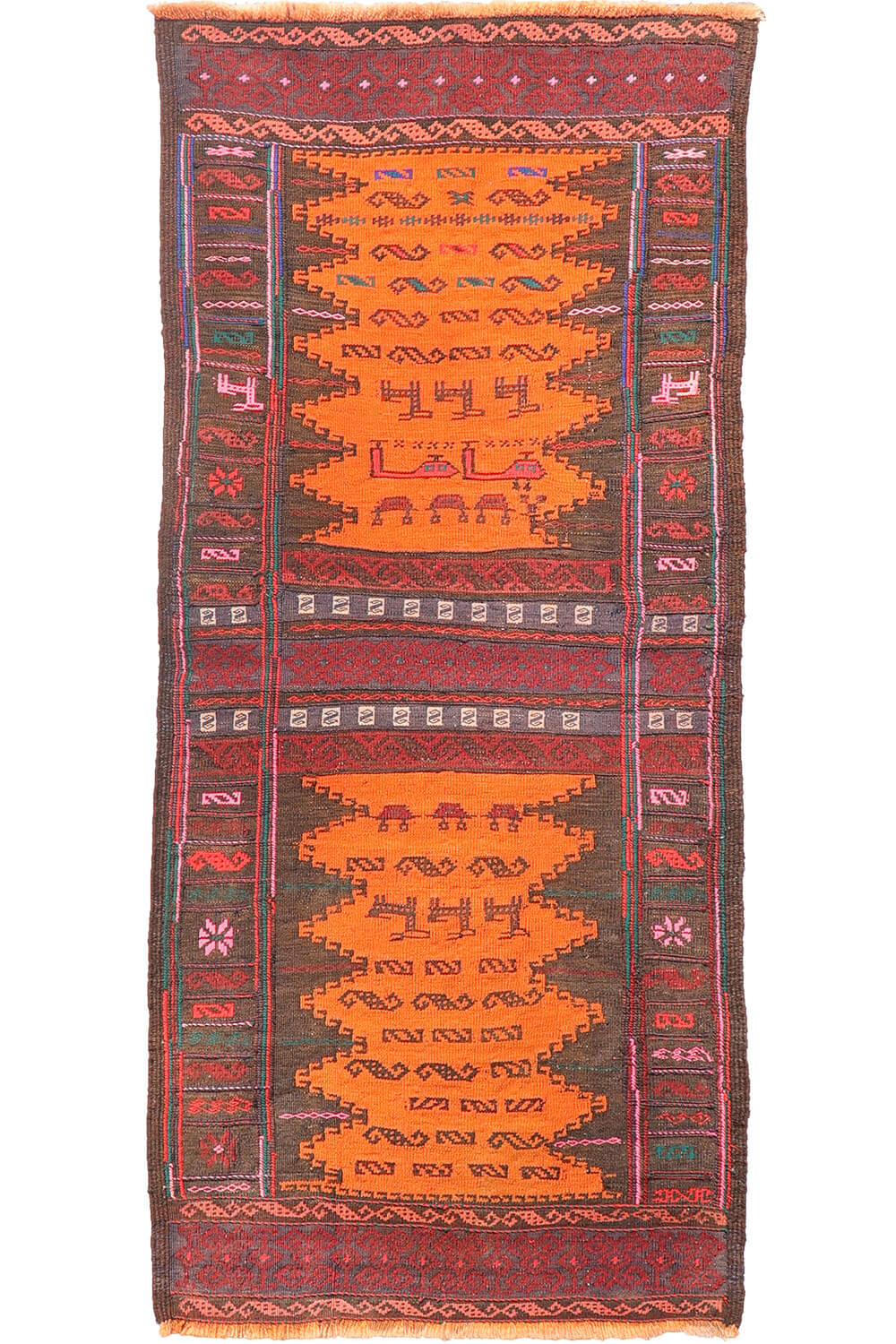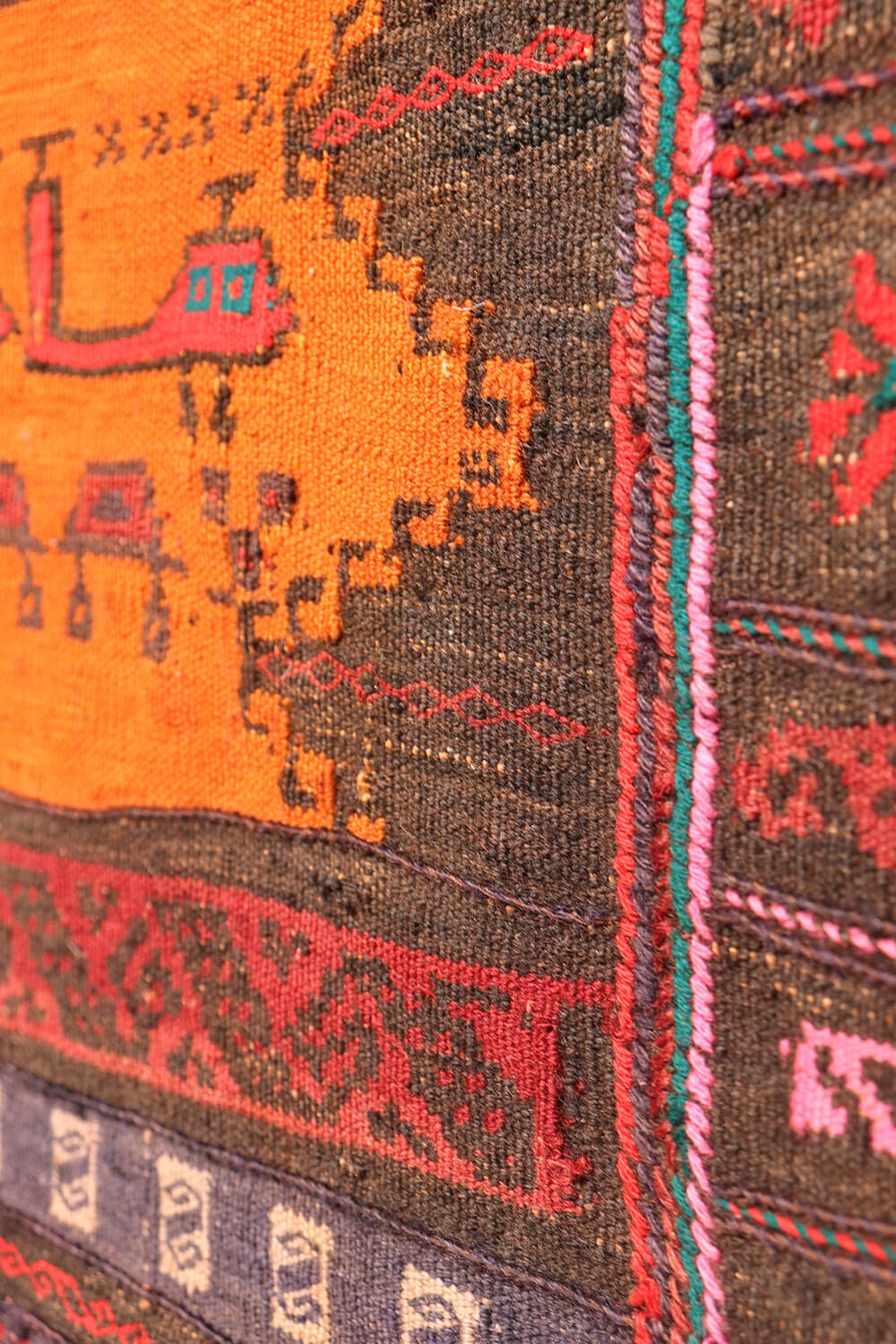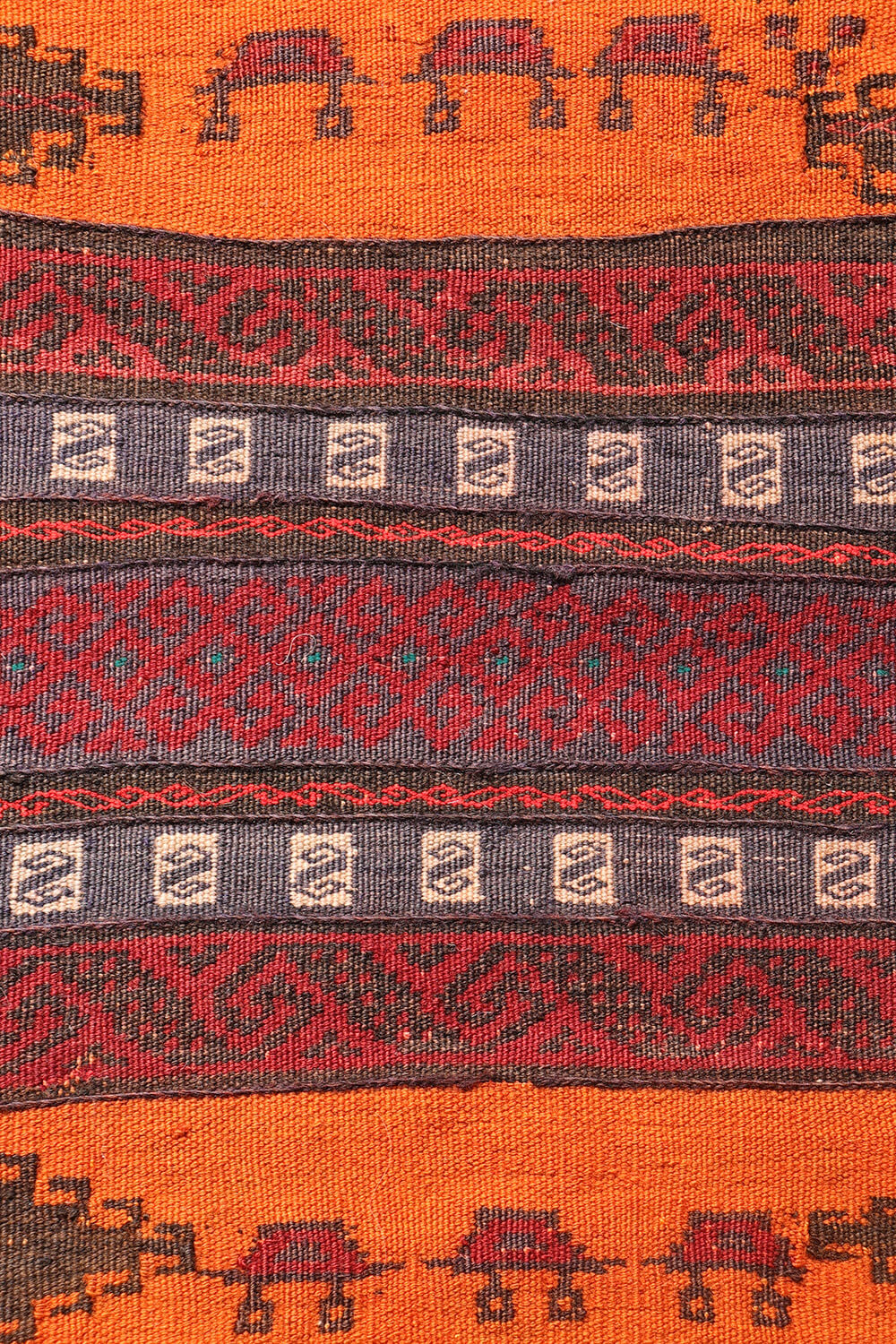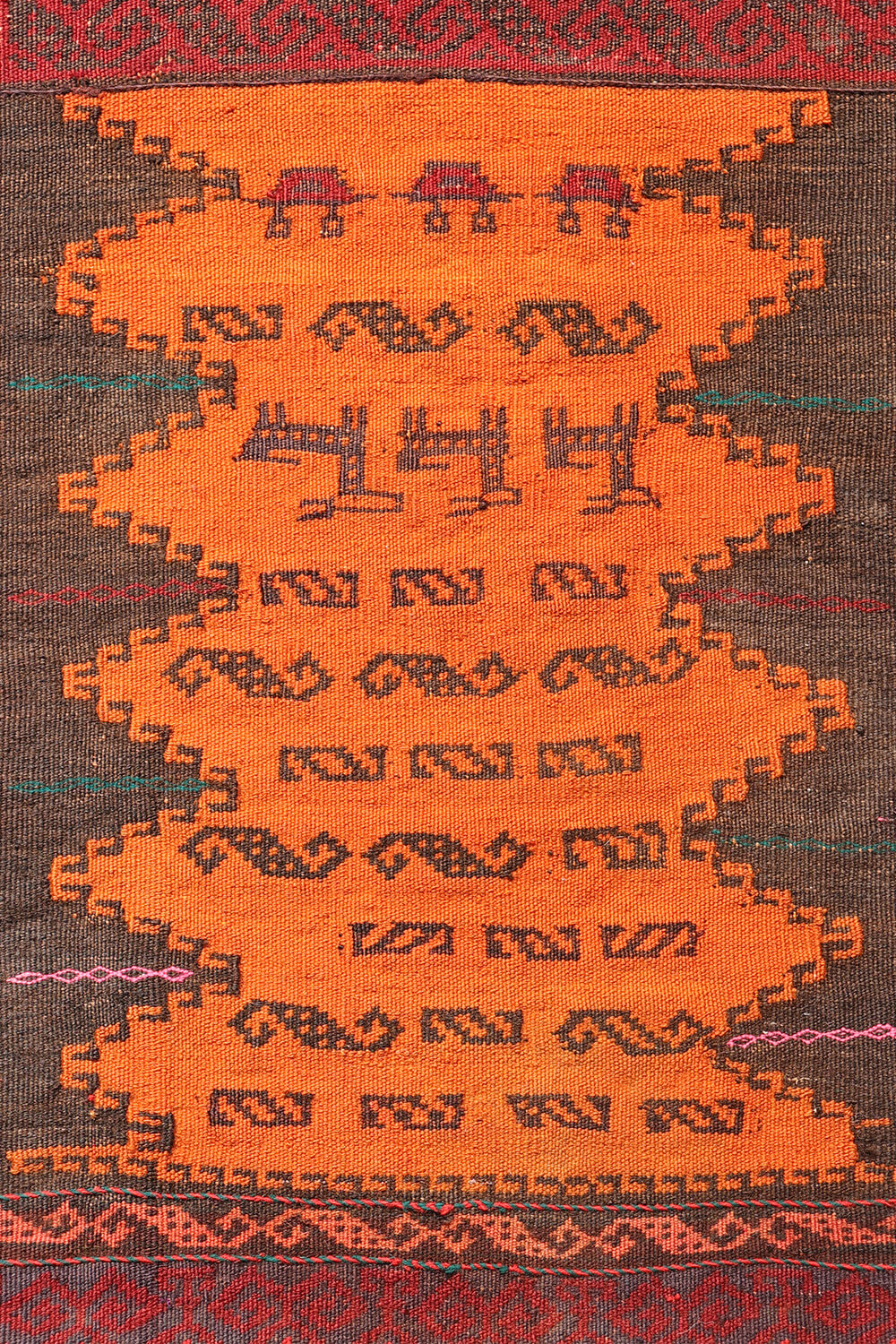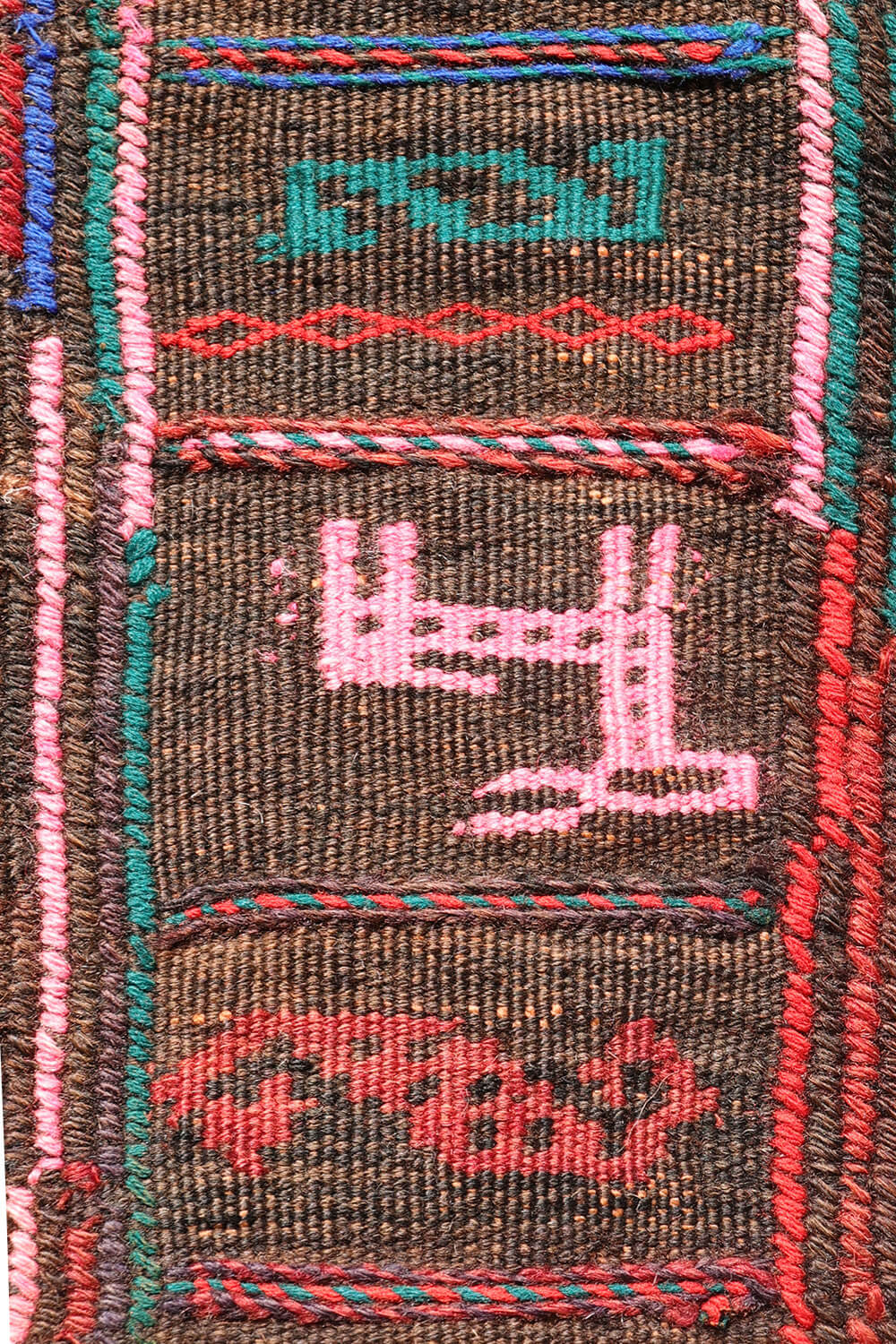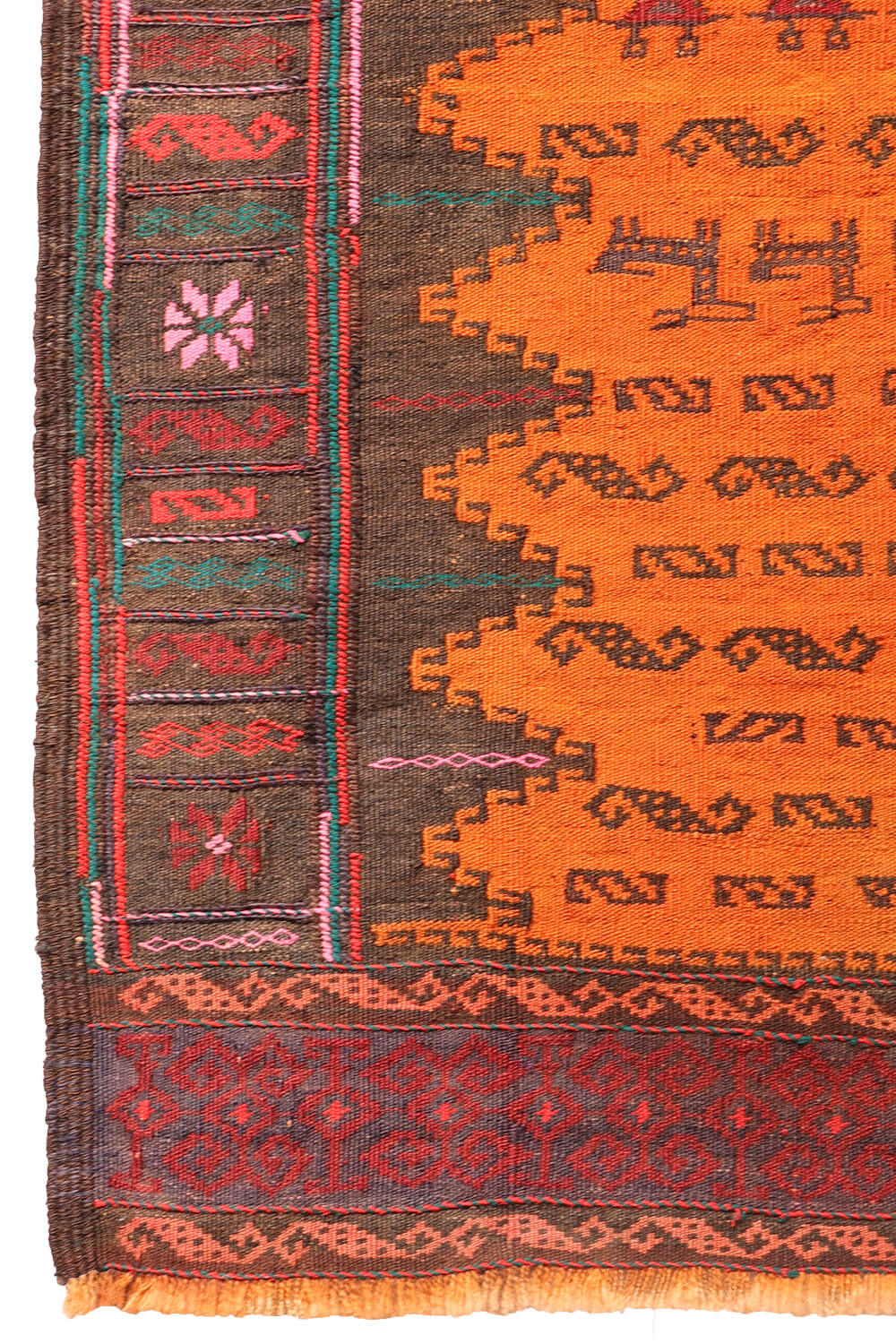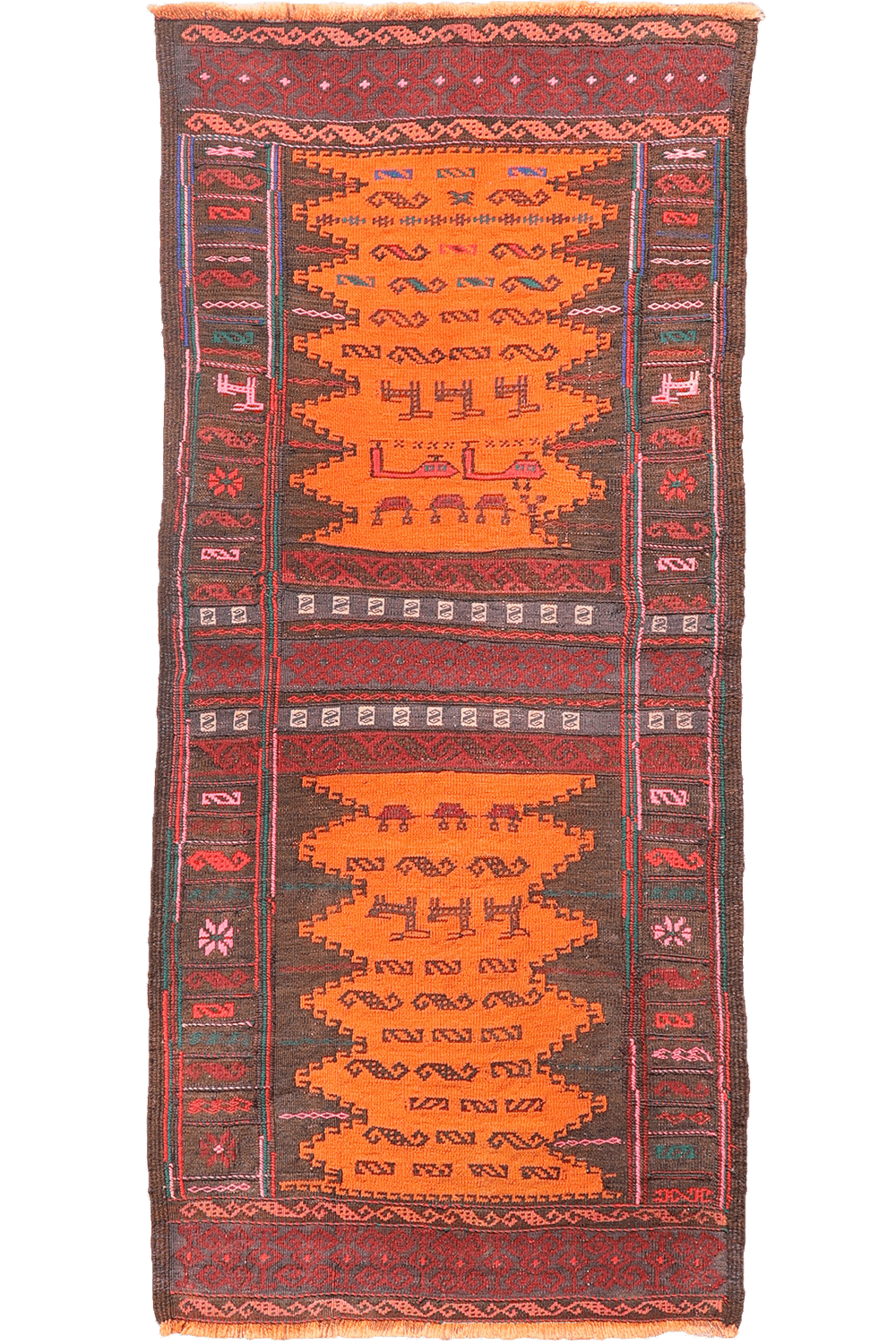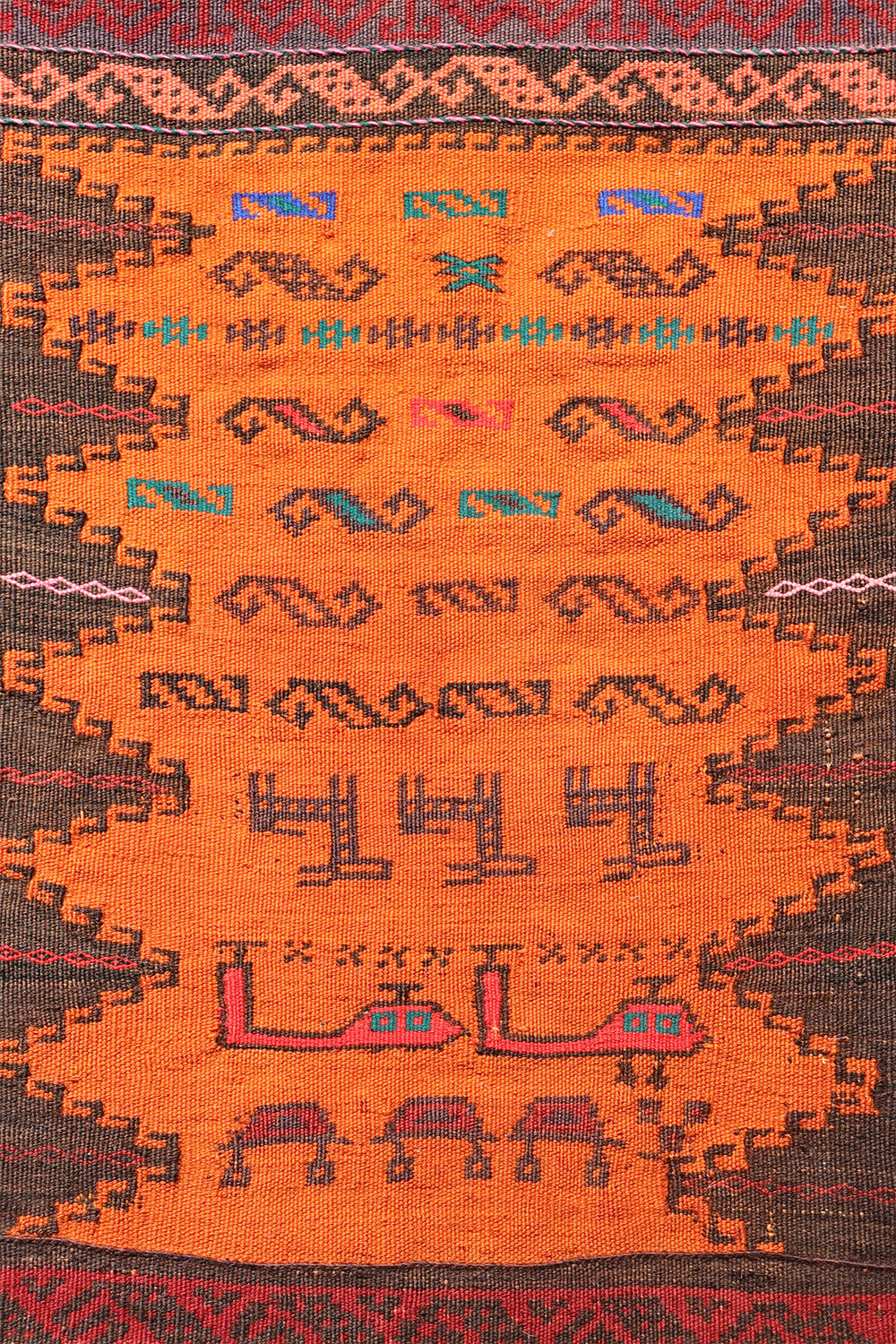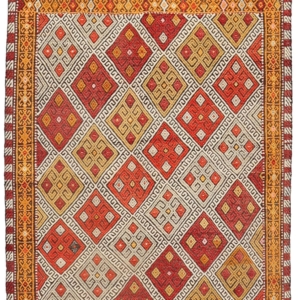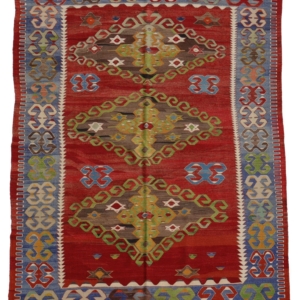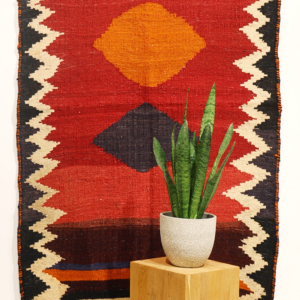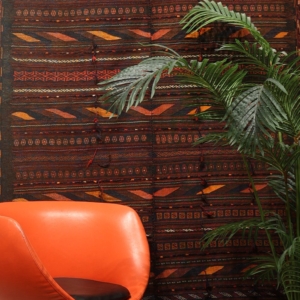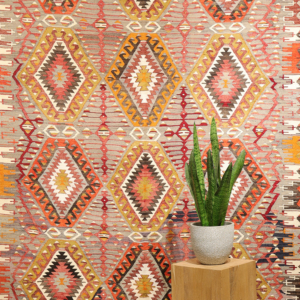265.00 €
Rare Vintage Afghan War Kilim – Dasterkhan Sofreh
This is an exceptionally rare and unusual vintage war kilim from Afghanistan. While Afghan war rugs are relatively well-known, it’s very uncommon to find a war-themed kilim, especially one in the form of a dasterkhan.
A dasterkhan, also known as a sofreh, serves a role similar to a dining table in the West. Traditionally, it is laid out only at mealtimes and stored away afterward. Though woven like a textile, it is not used for sitting or other purposes, as it holds symbolic importance—it is where daily bread and other blessings are placed, and must be treated with respect.
These cloths vary in size depending on the number of family members and the household’s prosperity, but they are always long, narrow, and rectangular. In tribal and rural communities, they are usually woven from wool using kilim techniques, which is why they are often classified as kilims in the West.
This particular kilim is very finely woven, allowing for especially intricate and detailed designs. Thanks to this fine craftsmanship, you can clearly see the war motifs, including helicopters and a caravan of vehicles—though the exact nature of the vehicles is hard to determine, adding an element of mystery and character to the piece.
Also woven into the design are goat herds, a motif that connects rural daily life with the symbolic narrative of the textile, enriching both its cultural and visual value.
A truly rare opportunity to own a collector’s piece that reflects both Afghan cultural tradition and historical storytelling through textile art.
Material: 100% hand-spun sheep wool and some achrylic
Size: 141×64 cms
Origin: Baluch tribe from Afghanistan
Date of weaving: 1980s
The Baloch or Baluch are an Iranian people who live mainly in the Balochistan region, located at the southeasternmost edge of the Iranian plateau, encompassing the countries of Pakistan, Iran and Afghanistan. There are also Baloch diaspora communities in neighbouring regions, including in India, Turkmenistan and the Arabian Peninsula.
The war rug (Persian: فرش جنگی farš jangi) tradition of Afghanistan has its origins in the decade of Soviet occupation of Afghanistan from 1979 and has continued through the subsequent military, political and social conflicts. Afghan rug-makers began incorporating the apparatus of war into their designs almost immediately after the Soviet Union invaded their country. They continue to do so today in the wake of the United States’ 2001 invasion of Afghanistan which ousted the Taliban government of Mullah Omar but has failed to bring an end to violence in the country. The rugs produced in response to these events are among the world’s richest traditions of war art of the late 20th and early 21st centuries.
The terms Baluch and war rug are generalisations given to the genre by rug dealers, commercial galleries, collectors, critics, and commentators. The distinctive characteristic of these rugs is their capacity to convey their makers’ experiences and interpretations of the circumstances and politics of war and conflict in the region.
Since the withdrawal of the USSR, the same themes and subjects have been reused and remade. Additionally, after 9/11 the events of that day were recorded in carpets, and more recently – since 2015 – drones have appeared as subject matter.
Additional information
| Weight | 2.3 kg |
|---|
Subscribe and receive the lastest news
